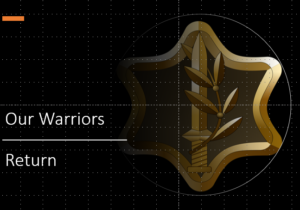Followership in 2022
The future of leadership is hot topic these days. But what about the future of followership? With the rise of artificial intelligence and automation, it’s inevitable that the workforce is going to change drastically in the next few years. And as the workforce changes, so too will the dynamics of leadership and followership. In this blog post, we’ll explore what the future of followership might look like as we bring 2022 to a close. We’ll discuss followership and how organizations can adapt to this new landscape of remote and hybrid work where followership becomes of greater import.
Defining Followership
The term “followership” has been used in a variety of ways, often leading to confusion and misunderstanding. One thing I would like to make clear, followership is not the opposite of leadership. If anything, followership represents a continuation of leadership – giving it depth and us a more robust understanding of how followers engage with leaders and their ideas.
For the purposes of this blog article, we will focus on two key aspects of followership: (1) the relationship between leader and follower, and (2) the attributes and behaviours of followers.
Leadership is often considered to be a one-way relationship, with the leader exerting influence over the follower. However, followership is a two-way relationship – both the leader and follower influence each other. The leader sets the direction and provides support, while the follower brings their own skills, knowledge, and experiences to accomplish tasks, achieve goals, and ultimately contribute to manifesting vision.
Barbara Kellerman defines followers as the “unleaders” who are without particular power, without positions of authority, and without special influence. And she goes on to explain that followership implies a relationship based on some form of rank – formal or informal – between subordinates and superiors. And that the nature of the relationship leads to a responding behavior of the former to the latter.
Using this definition as a spring board, we want to consider a slight variation on followership, one which is not only related solely to a dyadic power-weilder/power-receiver dynamic, but also as part of the greater realm of teamwork. The power dynamic is still of importance, don’t doubt that it isn’t, but power is a topic that needs to be discussed unto itself. So for our purposes we will use the rank aspect but add the implications of a bottom up perspective on team building.
So, followership is the capacity and willingness to engage in a relationship with a person (or other unit) undertaking a power process to manifest a vision, objective, or goal. Followership is not about receiving power, it is about bolstering or counteracting the power of someone trying to get something done in this world from the position of a follower.
There are many different attributes and behaviors that can make up a good follower. Some common ones include being motivated, having trust and respect for the leader, being proactive and taking initiative, being able to take criticism constructively, and being a team player.
Being a good follower isn’t always easy – it requires effort and commitment. Followership, like leadership, is a choice. And when it works well, it can result in greater success for everyone involved.
The Need for Trust
Trust is the foundation of any good leader-follower relationship. Without trust, the leader has no reason to accept the follower, and the follower has no reason to engage with the leader. Trust is essential for effective communication, mutual respect, and collaboration.
It is through trust that the many followers learn to engage in effective conflict, commit to actions (even if they disagree), hold each other accountable, and see worth in each other’s results. And it is incumbent on the leadership to establish a culture of trust between team members, but one that also includes the follower – leader dynamic.
The team must trust the leader. The leader must trust the team. And each member must trust that everyone is doing their part to reach the established goals, objectives, and ultimately the vision that brings the team together.
Without trust, leaders and followers are constantly second-guessing each other, which leads to misunderstanding and conflict. When there is trust, however, leaders and followers can work together towards a common goal with confidence. Trust also allows for candid feedback and constructive criticism, which are essential for growth and improvement.
A lack of trust can be devastating to a team or organization, while trust can be the glue that holds everything together. It is essential that leaders work to build trust with their followers, and that followers reciprocate by being trustworthy themselves.
Types of Followers
There are many different types of followers, each with their own strengths and weaknesses. Robert Kelley argues for 5 different followers based on two variables that bolster each other – level of engagement and level of critical thinking. Ira Chaleff on the other hand presents a two variable framework where the variables play off each other – support of the leader and challenge to the leader. More recently, Barbara Kellerman suggests only one variable – level of engagement – which can be viewed in either positive or negative light.
All of these can help a leader better understand the types of followers on their team. More importantly, each of them can help teach people to be better followers by considering how they are applying these variables and what it might mean about how others perceive their participation in the team.
But another way to think about followers is based on how quickly that accept leadership and the ideas being expressed by the leader. Here we can use a single variable – commitment as a way of thinking about follower types.
Using this variable, we have four types of followers:
1. The Innovator – the first to accept a new idea of concept and engage with it. They are willing to take risks. This group might be associated with the Kellerman’s diehard follower, but not necessarily. The Innovator is the first type of follower and usually makes up about 2.5% of the population. They are risk-takers and are early adopters of new products and ideas. They are often trendsetters and opinion leaders within their social circle. While they can be helpful in getting a new product or idea off the ground, they can also be difficult to please due to their high standards.
2. The Early Adopter – these followers are a solid group that accept the idea though they need to see some proof to trust that it is worth time and energy to engage. Once engaged however, these followers tend to be active in their association with the idea and are willing to be critical when the vision seems to be veering from the set course. The Early Adopter is the second type of follower and usually makes up about 13.5% of a group. They are slightly more risk-averse than Innovators but are still willing to try new things. Because they are more methodical in their decision making, they tend to be opinion leaders within their social circle and can be helpful in spreading word about a new product or idea. However, they can also be critical if they feel that a new product or idea doesn’t live up to its hype.
3. The Early Majority – These are the participants who generally need to see an idea’s worth before willingly engaging. Because they believe in the worth of a concept or vision, it has traction, and they actively support the steps necessary to see the idea reach fruition. But they are not bandwagoning. They join because leadership has established trust so they can believe in the worth of the concept and see their time and energy as well spent. They often become the workhorse who helps push the idea to the finish line because they help create enough movement for the idea to spread organically, or for the team to accept an idea and work to reach the goals set.
4. The Late Majority – these tend to be the bandwagonners. They sign on and will engage, but only once the idea has created enough headway that they are not essential for the process to succeed.
Each of these follower types play an important role in the diffusion of innovation and the success of a concept, company, or team. It’s important to understand the strengths and weaknesses of each type in order to build a successful following.
But it is not enough to know these follower types. They only represent acceptance of the idea, not necessarily the level of engagement you might expect from the followers.
For that you might use Kellerman’s engagement as a variable for followership, with Diehards, Activists, Participants, Bystanders, and Isolates. While it seems logical to associate the Innovator as a positive diehard, that might not always be the case. They may quickly become disillusioned with the vision and switch to a bystander or even an isolate or worse maintain their diehard attitude but in its negative form fighting tooth and nail against the proposed ideas.
Unless leadership is able to engage these followers effectively, and enact changes that will continue to build trust and commitment, they may face a coup d’etat where one of the negative diehards emerges as an opposition leader. So, it is essential that leadership understands different follower types and systems to effectively gauge the teams level of engagement, capacity for critical thinking, trust, and acceptance of an idea.
Leaders need to lean how to do this, and in this day an age it can become even more difficult given the nature of remote work, hybrid work, and international teams. And this is something AI cannot do – at least not yet.
Commitment and Leadership
So how does one effectively gauge followership? While there are many different skills a leader needs when engaging or determining the different types of followers, two of the most important qualities are commitment and active listening.
A committed leader is someone who is fully invested in their role and the success of their team. They are always looking for ways to improve and motivate their team. A committed leader is also willing to make sacrifices for the good of their team. They understand that each team member is integral to success, but not every team member is going to do the same thing or do things the same way. They commit to learning which leadership styles work best with their followers. And they work hard to help each follower at their developmental level and in relation to their enthusiasm for the work.
So, leadership is about understanding and being able to engage each follower where they are – developmentally, in terms of engagement, and in terms of trust.
And to do that, leadership needs to be about more than just giving orders or making sure stuff gets done. A good leader inspires and motivates their team to achieve great things. They provide guidance and support. This requires that leaders, especially those dealing with remote teams, learn how to listen and really hear what their team members are saying. This is the only way for the leader to effectively engage the follower and learn about them.
When a leader is committed and an active listener, they allow their team members to take ownership of their work. A good leader challenges their team members to push themselves and grow. They do this by listening, learning, and working with each follower to help them align with the vision, objectives, and goals of the team and the overall purpose of the organization.
Follower Accountability
With that, it is also essential for followers to be accountable to their leaders in order to maintain a productive and healthy working relationship. Leaders must be able to trust that their followers will complete the tasks assigned to them and meet deadlines. Followers who are not accountable can put undue stress on the leader and cause the leader to question their own ability to lead.
This means that the leader has created an environment where followers can trust that they can raise issues, roadblocks, and constraints without fear. And that they can talk about their own limitations or lack of skills without judgement. When a leader creates such an environment, the followers will feel like being held accountable is a legitimate and helpful way to reach new heights.
And when followers are accountable, they are able to show that they are reliable and trustworthy. This allows leaders to focus on other aspects of their job without having to constantly check up on their followers. Followers who are accountable also tend to be more engaged in their work and take ownership of their projects. This leads to higher quality work and a greater sense of satisfaction for both the leader and the follower.
Final Thoughts
When it comes to leadership, there are a lot of different philosophies out there. But at the end of the day, what does it really mean to be a leader? And what does it take to be a good follower?
In my opinion, leadership is a process. It take a great deal of time and energy. And while being a leader means having the ability to motivate and inspire others to achieve a common goal, it requires that the followers are on board, engaged, thinking, and trust that they can raise their voice without fear. It’s about creating a vision by establishing a culture. And it requires that leaders set the example for others to understand how to deal with failure as much as with success.
But just as important as being a leader is being a good follower. Being a good follower means being supportive, being willing to lend a helping hand, and putting the team first.
So what does it take to be a successful leader in an era of remote and hybrid work? I believe it takes a combination of both leadership and followership qualities. It takes someone who can not only inspire others to greatness, but also someone who is willing to roll up their sleeves and do the hard work required to make things happen.



